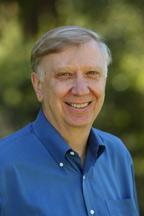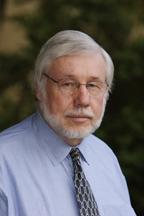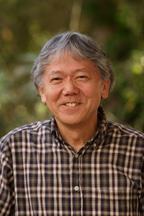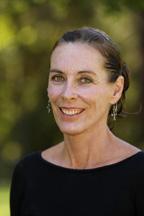Westmont Magazine Pioneering Professors Retire
Four longtime faculty members retire after shaping their departments in significant ways as both scholars and teachers.
JOHN CARLANDER arrived at Westmont in 1980 before the college had developed an art department. Creating one appealed to him, and he welcomed the arrival of fellow art professor Tony Askew in 1982.The two artists worked together to build an enduring program.“We started Arts Ascent, an outrageously successful summer camp, and people loved it,” Carlander says. It fueled interest among students and the community while raising funds for the Art Center. Today, the number of art majors continues to grow, and the department enjoys its new home in Adams Center for the Visual Arts.
Noting the human capacity to be creative and do art, Carlander says,“Some employers would rather hire art majors because they can think creatively. It’s tragic to push art aside as unimportant. Tapping into creativity, pulling the ability to make art out of students and helping them discover they have this capacity is a joy.”
“To see where the art department began, literally and figuratively, and to see where it is today is to witness something akin to a miracle,” says Rick Pointer, professor of history.“What a marvelous legacy to cherish.”
RON ENROTH continues to get calls from people seeking information and advice for family members involved in non-traditional religions, cults or abusive churches. During his 47 years teaching sociology, he became an expert in this area, writing books such as “A Guide to New Religious Movements,”“Churches That Abuse,” “Recovering From Churches That Abuse” and “Youth, Brainwashing, and the Extremist Cults,” published six months before the 1978 Jonestown massacre.“There was an incredible response to some of the books because they were needed,” Enroth says.“I’m grateful for the ministry they’ve had and still have.” (See an article by Enroth on page 10.)
“He was one of the first Christian scholars to explore cultural and theological reasons for the development of new religious movements, especially on the cult side of things,” says Stan Gaede ’69, scholar-in-residence at Gordon College and one of Enroth’s students.“Ron always seemed to care about his subject. It wasn’t an intellectual exercise for him but something that demanded his attention as a follower of Christ.”
In 1973, Enroth helped co-found Westmont’s groundbreaking Urban Program (now Westmont in San Francisco).“I’m pleased that it continues to change students’ lives,” he says.
ALLAN NISHIMURA has involved many students in his scientific work, influencing the chemistry department to focus more on student research. Chemistry professor Niva Tro studied under Nishimura and describes his 31-year tenure at Westmont as an extraordinary accomplishment. “Before Allan came, Westmont offered no undergraduate research in chemistry,” Tro says. “He kicked it off, and now research is a staple of our department. Through it all, he has remained a humble, quiet servant.”
Nishimura, the first recipient of the Faculty Research Award in 1984, earned the Teacher of the Year award in 1998 and 2011 and became a Distinguished Professor in 2003. In 2007, he was installed in the Kathleen Smith Chair of Natural and Behavioral Sciences, the first endowed faculty chair in the sciences.
Over the years, Nishmura collaborated with about 80 different students to co-author more than 80 published manuscripts. His two dozen research proposals have brought in $1 million in external funding.
“Dr. Nish is so much more than a professor and former research adviser to me, ” says Wendi Hale ’09, a graduate student at the University of Michigan.“ He is like a favorite uncle, always encouraging me during difficult times.”
“He was always willing to share the wonder of God’s creation through chemistry,” says Mandy Miller ’06, a resident at Regions Hospital Emergency Medicine in Saint Paul, Minn.
ERLYNE WHITEMAN, a pioneer for dance as part of a Christian liberal arts education, retires after teaching for 38 years. Her courses have included water aerobics, ballet, gymnastics and ballroom, Latin and swing dancing.
She choreographed dozens of shows for Westmont, the Santa Barbara Dance Alliance and the Sacred Dance Guild, as well as six musicals.As director of the Westmont College Dance Program, she oversaw dance concerts and the Windancers, the student dance company.
“Entering Westmont during a period when dance was viewed with suspicion, she stayed true to her course,” says John Blondell, professor of theatre arts. “She waited, she stepped cautiously and she persevered. She was unbending in her resolve. Today, though few Christian colleges can boast they have a dance program, Westmont can. She helped develop students’ awareness of the body’s potential, introduced them to the joy and possibility of human movement and helped them cultivate a life of exuberant celebration.”
Whiteman has published chapters in texts and articles about dance management and sacred dance, including “God’s People are Dancing—Again” for Christianity Today. She has been dedicated to her students, inviting them to dance with her in many venues.



